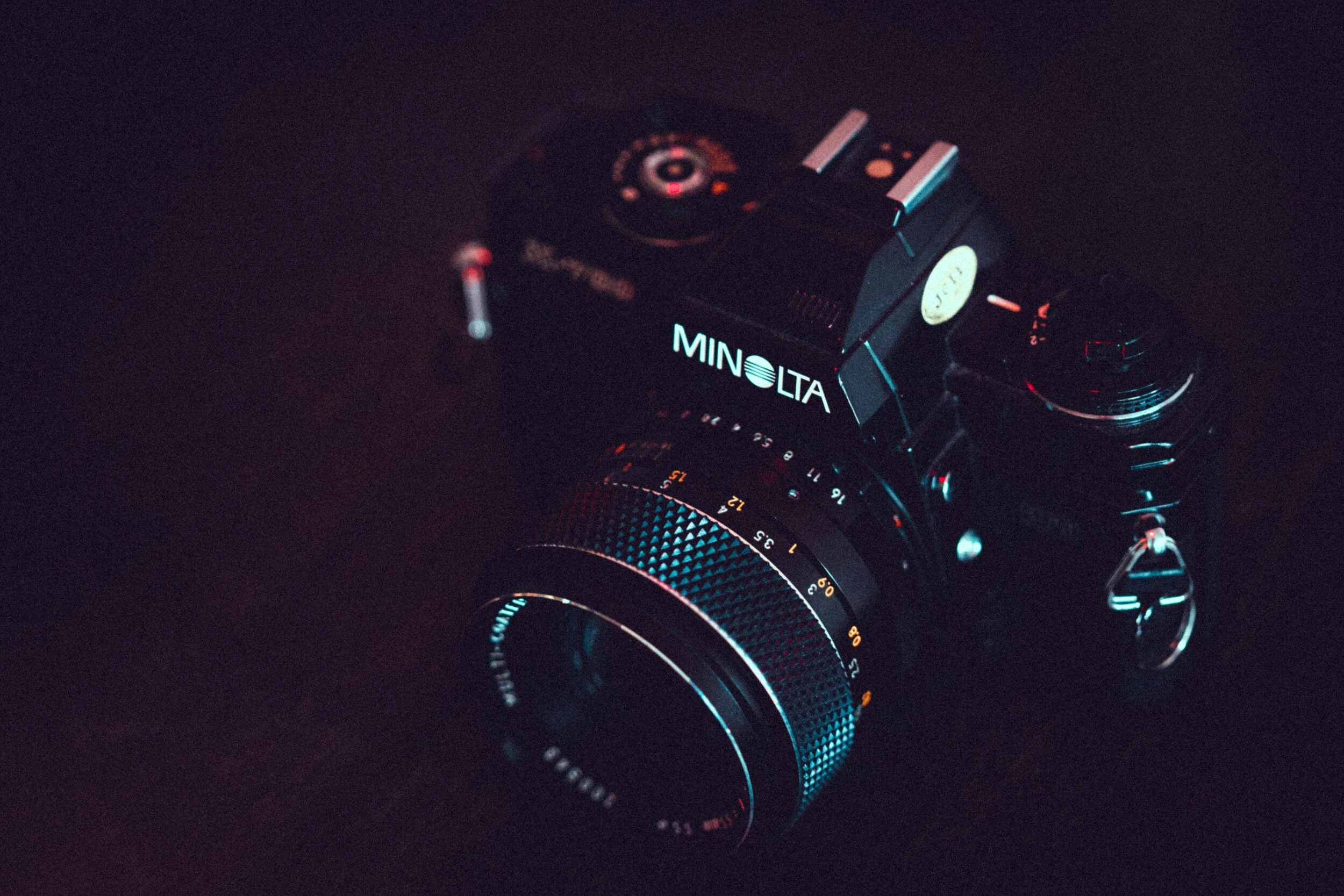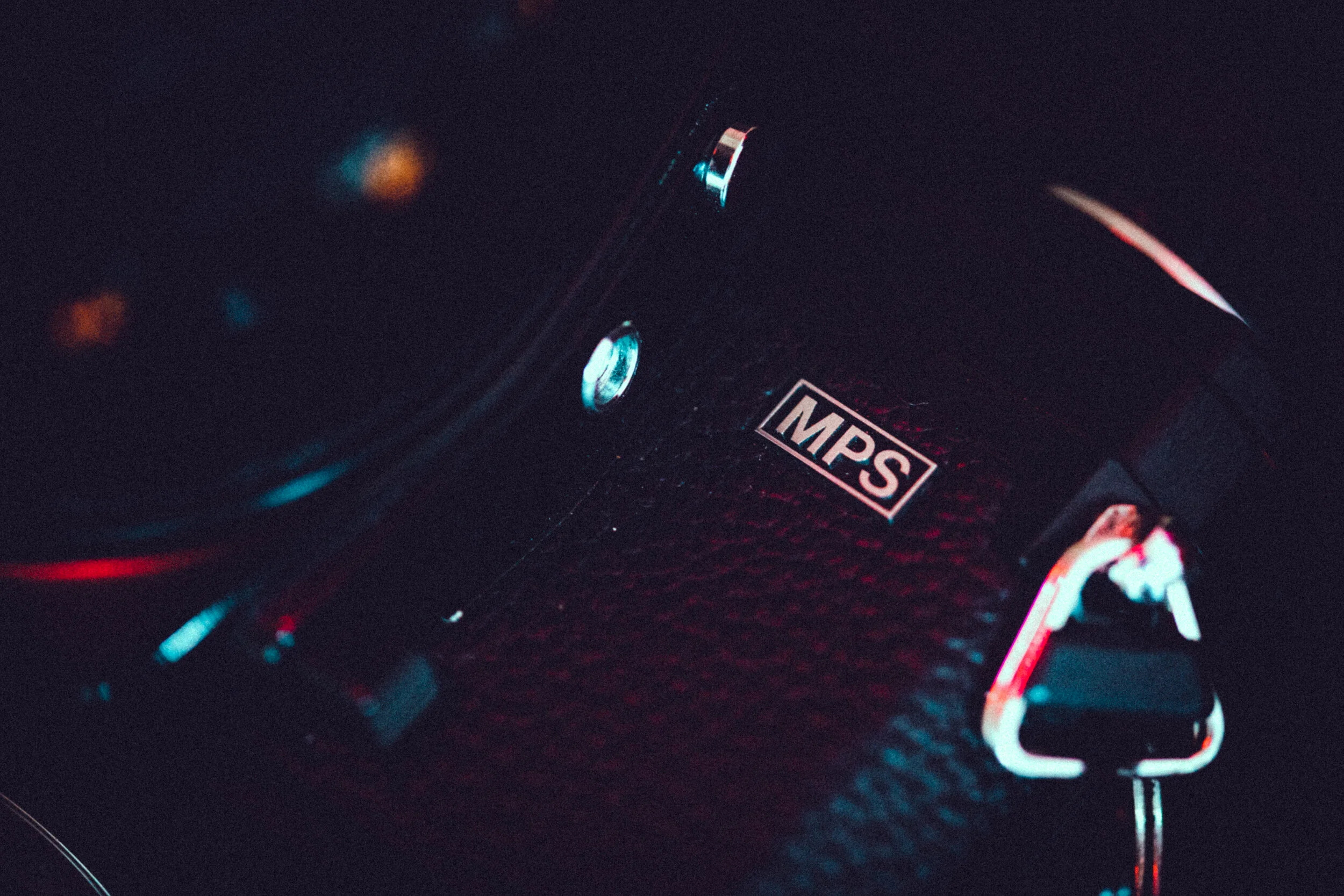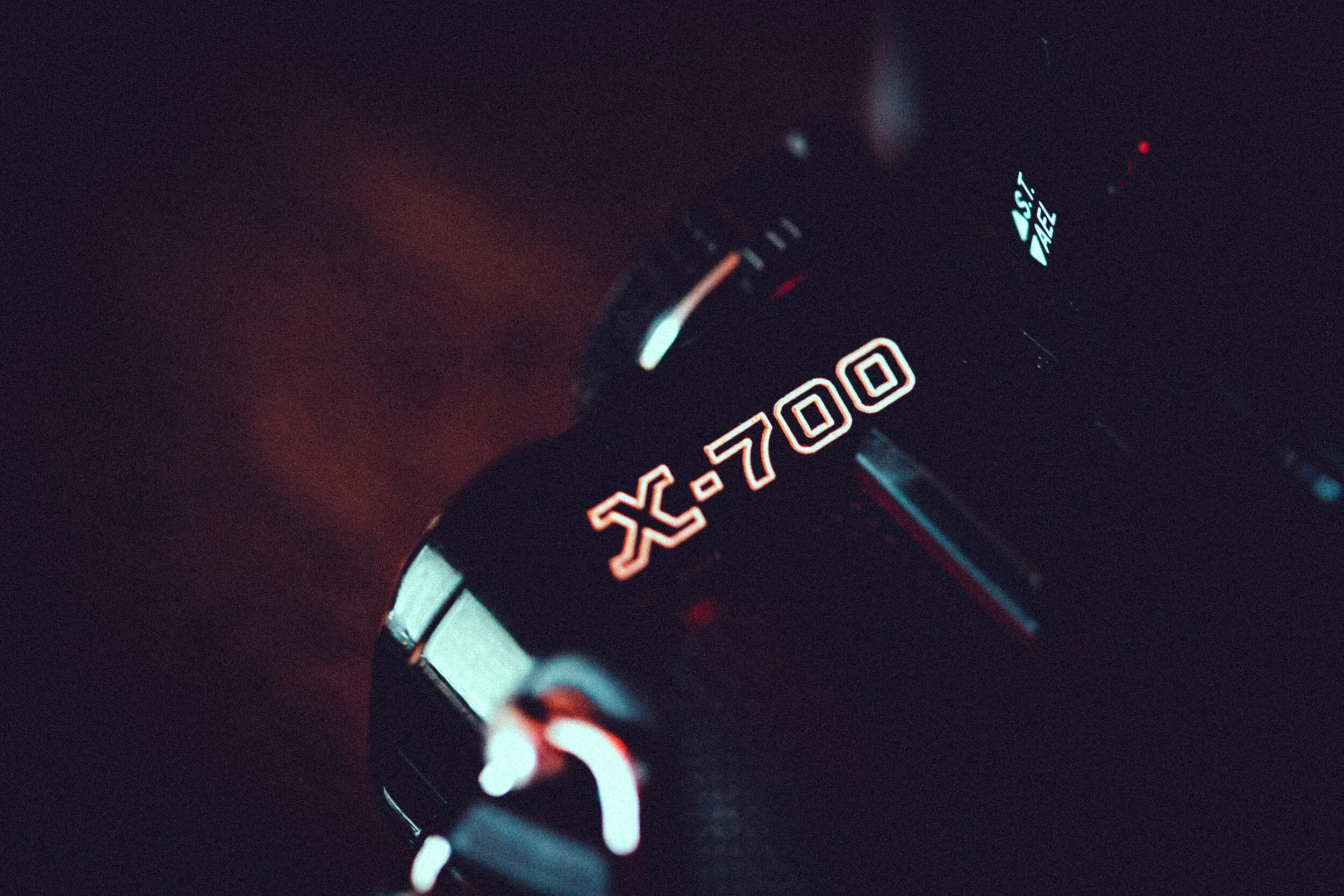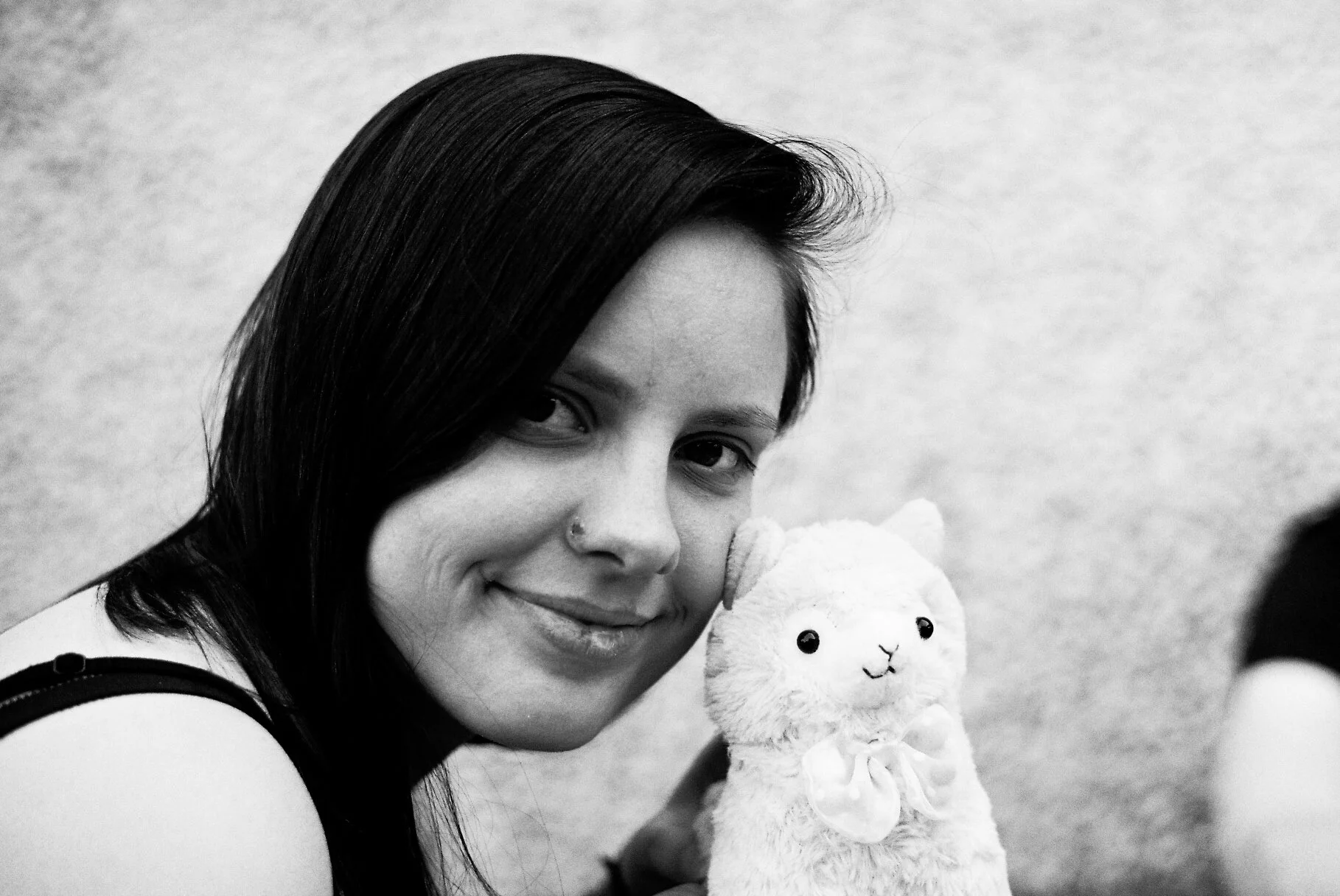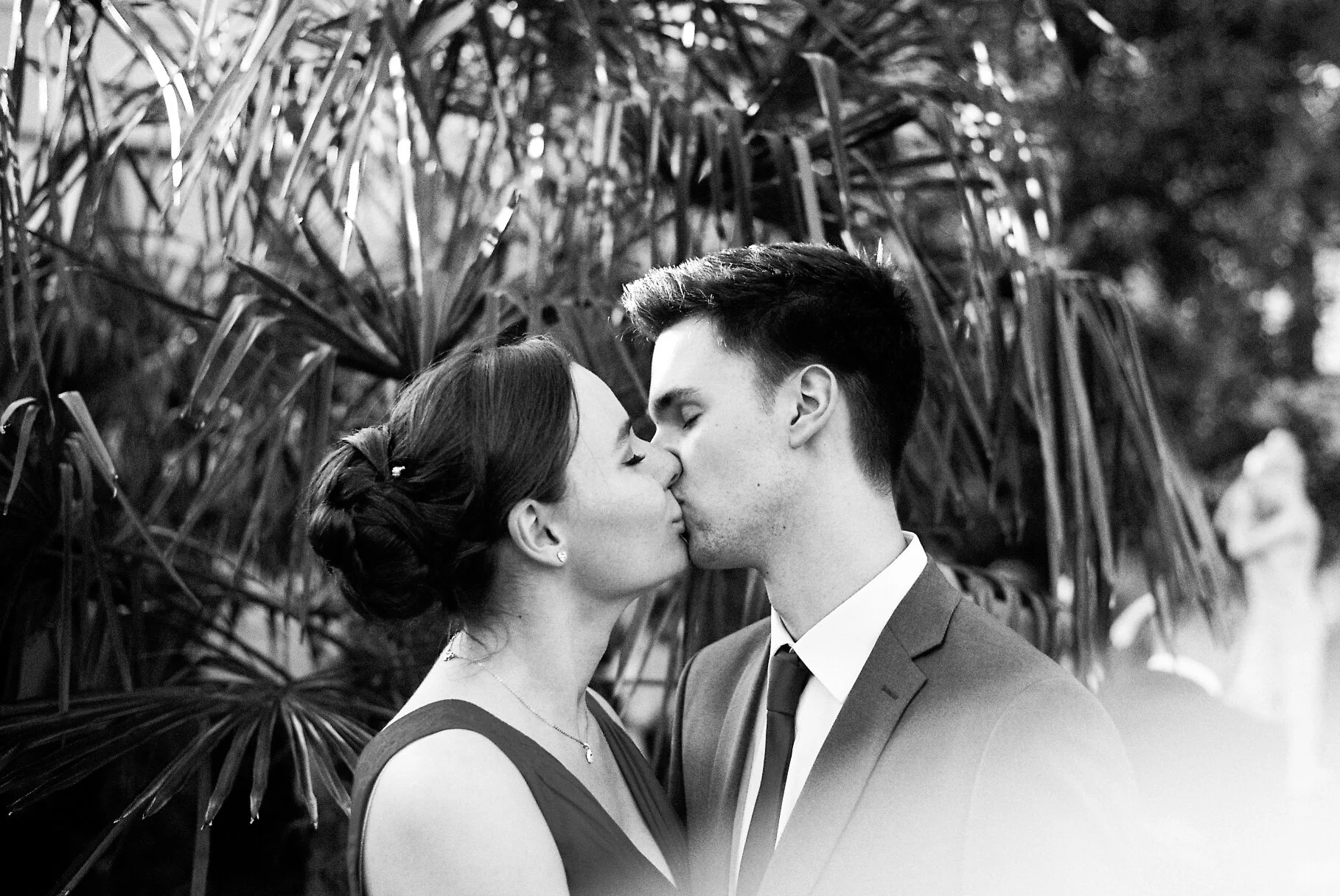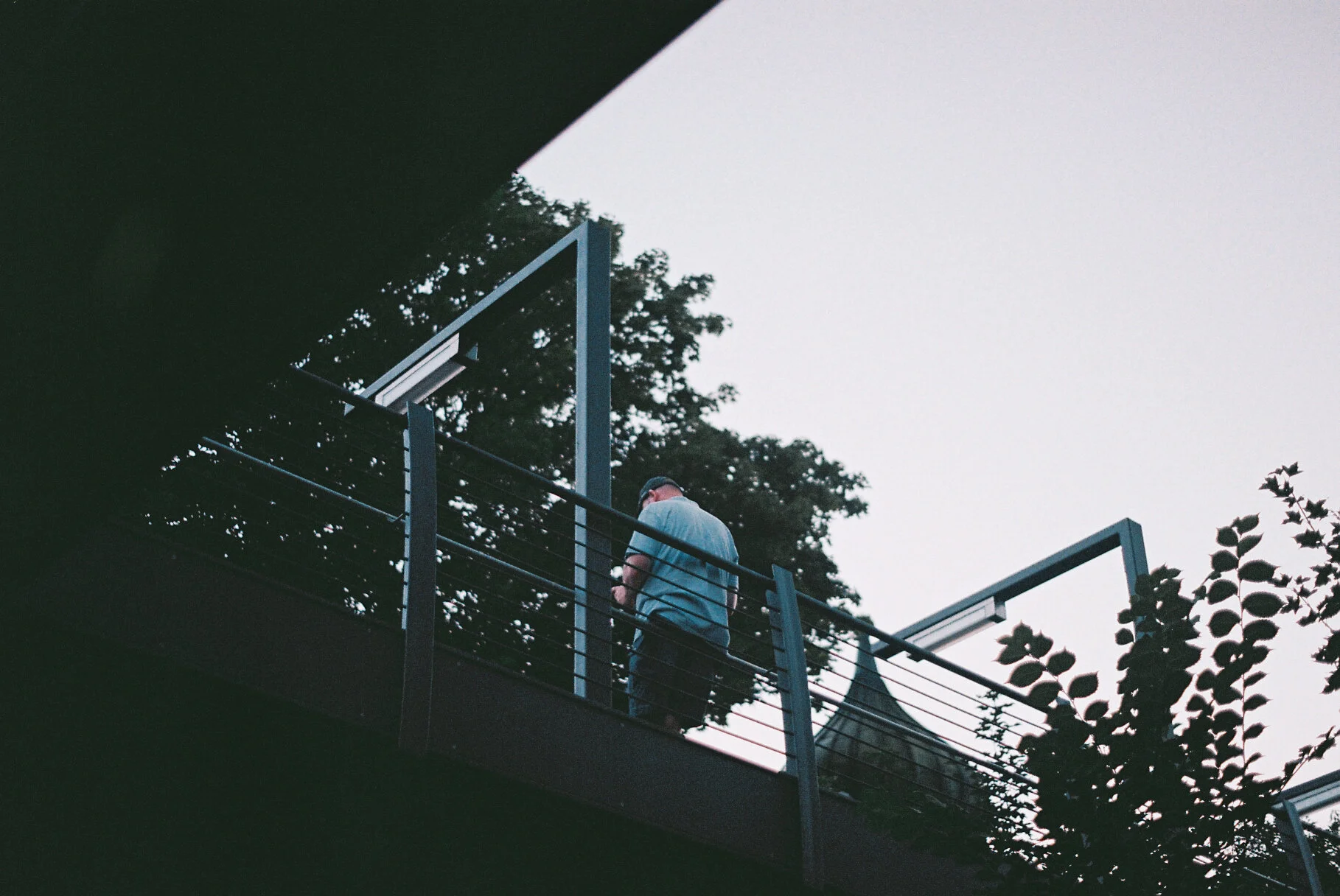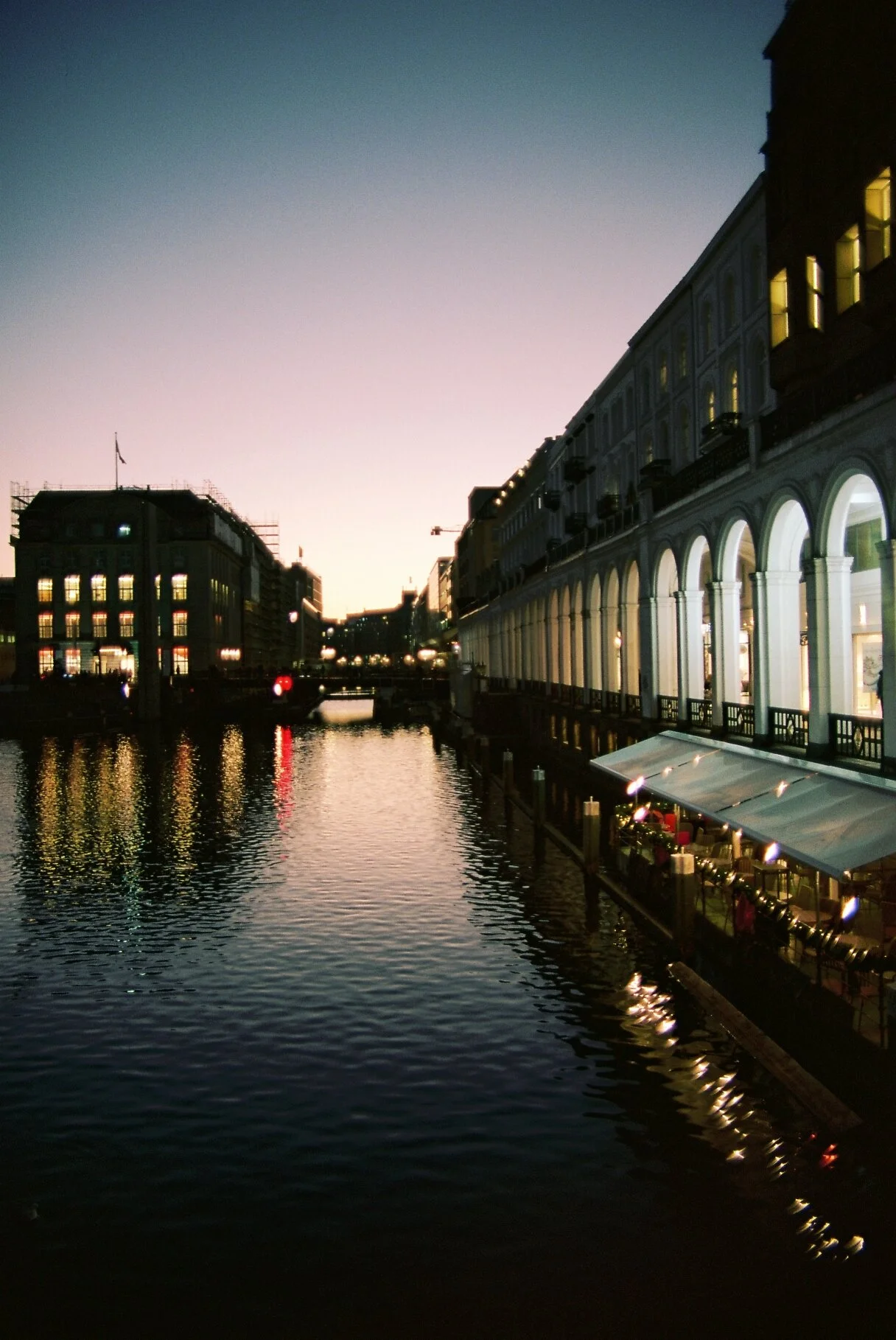Minolta X700
Brand: Minolta
Type: Analog SLR
Year of release: 1981 (80’s Tech, woohoo!)
Crop Factor: 1x
Aperture: Variable (Depends on the lens)
Weight: 502g
Condition of my copy: Nearly mint condition, working perfectly
Overview
The Minolta X700 is a single lens reflex camera from the good ol’ 80s. It probably was the biggest rival to the Canon AE-1 and in my opinion, it’s even better.
It takes usual 35mm film cartridges and needs LR44 batteries, which are widely available, so you don’t need to worry about your camera being dead soon (like my old Praktica, which uses PX 21 cells). But remember, the camera does need a battery to operate. Without you can’t even release the shutter.
The bayonet takes Minolta SR lenses (including MD and MC lenses), which offers you a huge and mainly cheap range of good lenses. Don’t forget, Minolta once was Canon’s and Nikon’s biggest rival and the Number 3 camera seller in the world, so plenty of lenses are around to be found in attics or on street markets.
Build Quality
The X700 is almost entirely made from plastic yet doesn’t feel cheap. Well, at least not as cheap as modern plastic DSLRS. Being made from plastic is quite handy though, for it reduces the camera’s weight to feathery 502g. What doesn’t benefit from the lightweight build is the environmental sealing. The design is as 80’s as a Vangelis soundtrack, so even if you won’t actually use it, it makes for a good hipster fashion accessory (Please don’t waste it as a hipster accessory). The viewfinder is (even by today’s standards) very big and bright, infact, the only viewfinder I’ve used that’s bigger is the one of the Flexaret (but does this count?)
Features
Being born in the 80’s and made for the amateur user, the X700 offers a great variety of technical gizmos. For example: The afore mentioned bright viewfinder has a very handy focussing screen build in. Also, your shutter speed is displayed inside it as well, while your aperture can be read directly from the lens using a tiny mirror at the bottom of the viewfinder. Also, apart from manual and aperture priority mode, it offers a complete auto mode. Keep in mind though that you’ll need the right kind of lenses for this feature.
A great little extra is the sensor inside the shutter button. To activate the light meter before shooting you just need to touch the shutter. No half pressing, no accidental releases, just touch the button and the correct shutter speed lights up inside the viewfinder.
Should you buy this?
Short answer: Yes.
Long answer: It depends. The camera is great and one of my favourite film SLRs I’ve ever used (neck in neck with the Minolta XD7) and it’s my first choice for relaxed city or landscape shoots without the pressure or anticipation of a “normal” shoot, when I want to have a richer experience. Plus, I do have some nice yet cheap old lenses. If you want to have a lightweight, analogue addition to your daily kit, take this camera. But remember: It was made for amateurs and enthusiasts. Not professionals. I wouldn’t recommend it for commercial work. Plus, I wouldn’t use it in harsh conditions like rain, snow or low temperatures.
Otherwise, the weight, wide variety of lenses and the usage of modern batteries makes this camera not only a great introduction to the world of film, but also a comparatively cheap one. Just take care that you don’t get one with the fault capacitor error. These happened quite often but although I didn’t experience one so far (phew) but I’ve heard that they’re easy to fix.
Sample images below shot on Kodak Portra 400 and Kodak Gold 200


